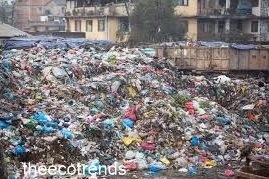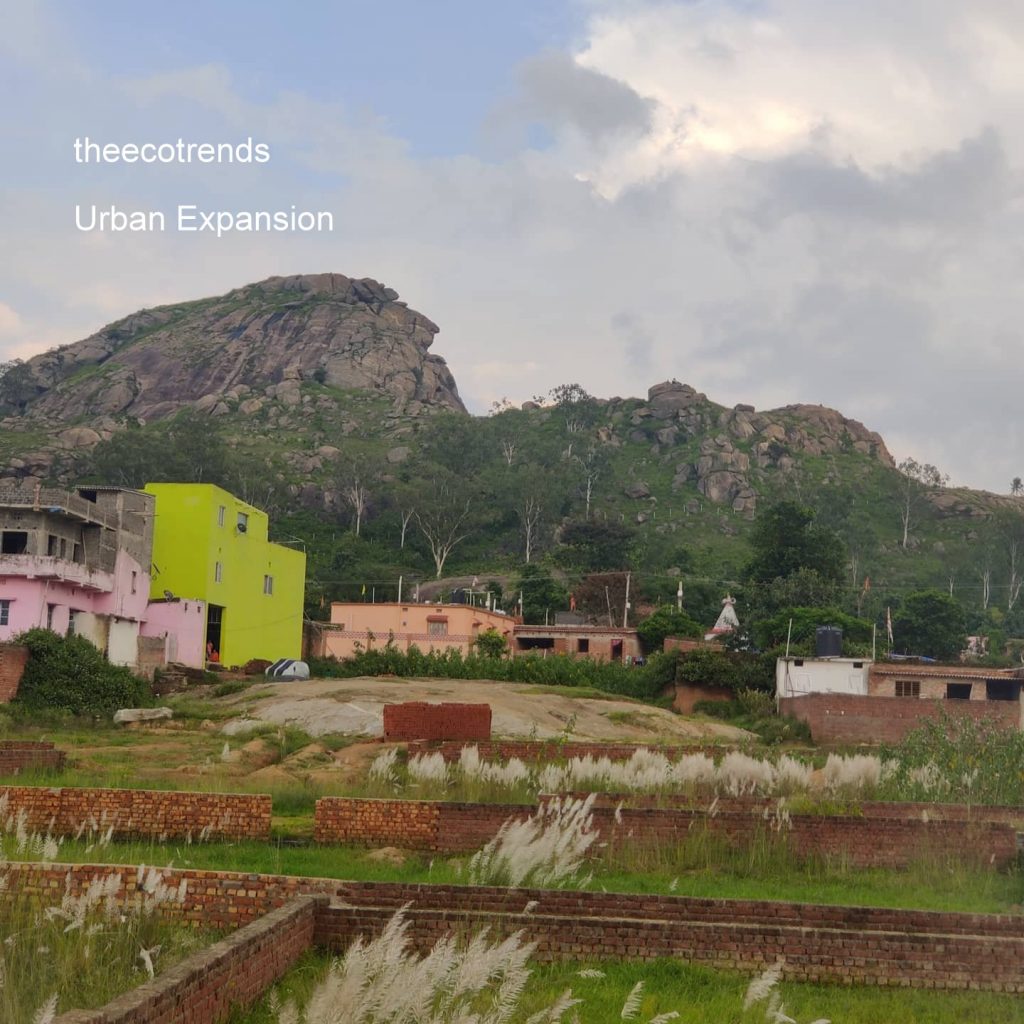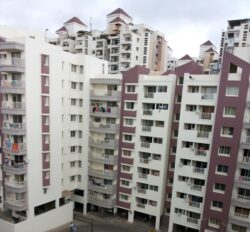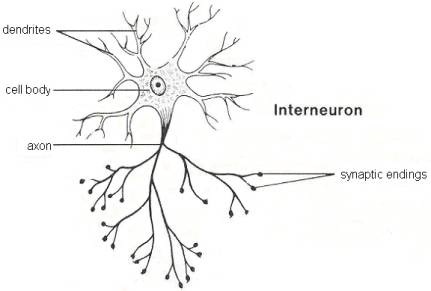As per an assessment, about 600 million people inhabited urban areas of the world in the year 1950. But now urban areas have been recorded to be inhabited by about half of the total population.
Now it has been assessed that the population of cities may get doubled within the period of coming 28 years.
Rise of population in urban areas at the current rates is feared to raise the consumption of resources in the same proportion. Since resources are fixed, crises in all walks of life are bound to follow.
Some of the major problems of urban areas are associated with – Pollutions of air, water and land; housing and congestion; land use; waste disposal; and Common Social Facilities etc.
Problems of pollutions of air, water and land
Heavily populated areas in cities bear a severe problem of pollution of air, water and land. Various types of gases and fumes that come up into atmosphere from fuel burning sources from municipal areas, transport sectors and industries cause severe air pollution.
Smoke and dust that join city atmosphere from rural agricultural areas due to different agricultural activities like burning of agricultural waste ( like paddy and wheat stubbles) cause serious air pollution in city atmosphere.
Principal pollutants of air in urban areas comprise dust particles, particulates of various compounds and gases like water vapour, smokes, carbon dioxide, Nitrogen oxide, Sulphur oxides and Chlorofluorocarbons etc.
SO2, NO2, H2S, CO2 etc can form acids on combining with water vapour in the sunlight.
These acids get deposited on dust particles in the atmosphere and on anything else.
This process is called as Acid Deposition.
When it rains, the acid in the atmosphere is washed down with rain water and causes acid rain. Acid rain not alone corrodes the walls of monuments (like those of the Taj Mahal) it causes different skin problems as well. It damages plants that are planted in these areas.
When pollutants like Chlorofluorocarbons (CFCs), aerosols, Carbon tetrachloride, Chlorine etc. accumulate in the stratosphere, these react with the Ozone of the Ozone Layer found there as a protective umbrella of the earth.
The Ozone Layer is called as the protective umbrella of the earth because it does not allow the Ultraviolet Radiations of the sunlight to cross it and to reach to the earth.
The Ultraviolet radiation, if allowed to reach to the earth, it may cause skin cancer, cataract, hereditary diseases, loss of marine life and loss of terrestrial plants.
Water pollution has emerged as a major issue in urban areas over the years. Water pollution and water scarcity are major problems faced by many cities and towns of the world.
Municipal wastes, hospital wastes, industrial wastes, wastes from slaughter houses and pathology centres are dumped on the ground to cause serious land pollution.
If these wastes are not disposed by municipal corporations, these wastes are routinely mixed into the water sources like lakes, ponds, oceans etc.
When these wastes are dumped into landfill sites these inhabit a number of groups of germs of diseases that spread through wind or through suitable vectors.
Surface runoffs from mine areas join water bodies and contaminate their waters with a number of pollutants to contaminate urban sources through different routes.
Problem of open space
With the expansion of the cities more and more land is going under constructions of buildings, fly-overs, hospitals, railways stations, international aerodromes etc. As such the cultivable green lands around the cities are under severe stress.
Many developing countries are cleaning their forests to grow cash crops and rear cattle for the production of meat.
Many cities in India are unplanned. They neither have proper play grounds nor parks and green belts. These cities have become just the jungles of concrete and rain water cannot percolate into the ground to recharge the water table. As such most of the cities face water crisis during major part of a year.
The water supply for these cities is maintained by bringing water through pipelines from a distant river usually crossing through some other state. It is again a matter of worry for two grounds- first, it often creates interstate disputes and, second, it puts stress on the resource of some other people.
Problem of waste disposal
Urban areas face great problems of waste disposal. Cities generate greater amounts of wastes of different types. Solid wastes generated from municipal and industrial sources contain large number of ingredients some of which remain toxic in nature.
Management of solid waste is one of the essential services which are to be provided by the municipalities or the corporations to urban people. It is an important and regular activity. Hence, it should be planned and executed properly so as to maintain a clean environment.

The disposal of solid waste from cities is an expensive activity. It involves money and man power.
Hence, practice of recycle; reuse and composting should be adopted to reduce the load of solid wastes from urban areas.
Problem of common social facilities
Human beings need facilities to make their life comfortable on all fronts. More people require more facilities. But facilities may be limited so there many are great rush and competition for availing facilities.
Thus, considerable stress is imposed on urban people. Here are some examples – Roads, Parks, play grounds, water supply, community wells, community halls, community hand pumps, schools etc. are some of the social facilities that people avail regularly. But these social facilities are neither managed properly nor taken care of by the local public.
Roads often remain occupied by demonstrators of political parties or processions. Many times school buses are caught in the traffic jams causing agony to the students, parents, principals and teachers. Grounds where people go for morning walks are often occupied by circuses, exhibitions, fairs and the like activities.
The members of the management groups and the workers of these activities often damage the entire landscape and leave without repairing the same.
Political parties organize rallies and meetings in open grounds and go after leaving banners, posters and different types of garbage in the open. Even parks in urban areas are often occupied by beggars and criminal people. People without civic sense throw garbage in community wells, ponds and lakes.
Wherever we see, we see the abuse of social facilities by the careless public. All these problems are and lack of the sense of social responsibility among citizens.
Problem of congestion
Urban areas are usually densely populated locations.
People migrating from villages towards cities further increase the population burden of cities. Thus, urban areas are suffering from serious congestion and traffic problems.
All the city dwellers need houses to live in but houses and the land are limited. Wet lands and agricultural fields of sub-urban areas are purchased by developers for building apartments on high prices and most of the cultivable land is being used for constructing houses.

Thus, urban areas are expanding on one hand and the rates of rent are increasing on the other.
Labourers working in factories or other people doing minor business occupy government land, pavements, parks, monuments etc. and start living there. Jhuggies, Jhoparies clusters are mushrooming around every city. These are called as slums. Slums are very unhygienic places as they don’t have proper civic amenities.
The govt. of India formulated a comprehensive Housing & Habitat Policy in Aug 1998 having a long term goal of reducing homelessness, improving the housing conditions to those who are inadequately housed and in providing a minimum level of basic services and amenities to all.
Key Words : Urban Environment, Pollution, Jhuggies, Jhoparies, congestion, open space, housing




